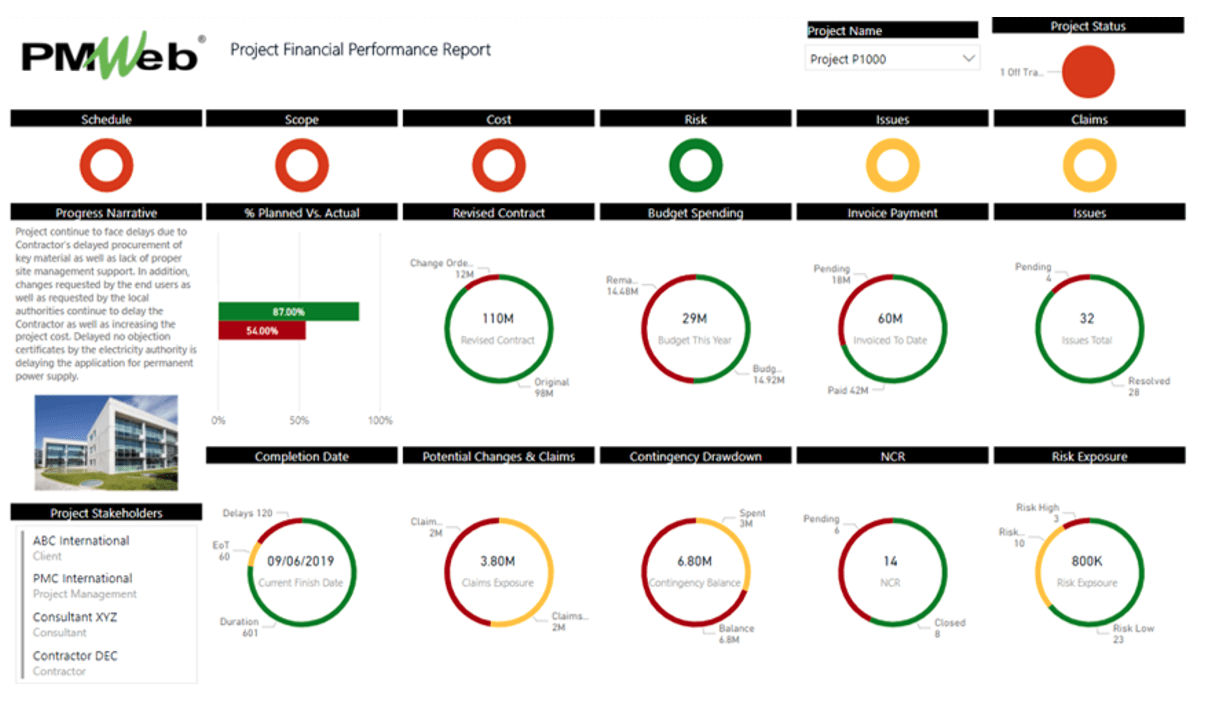The Project Quality Management Plan (PQMP) for capital construction projects is a written document that serves as the basis for the overall Project Quality Assurance and Control System and identifies the quality requirements, methods to achieve Project Quality objectives, and continual improvements during the work execution. The Project Quality Management Plan (PQMP) is a subset of the Project Management Plan (PMP) also known as Project Execution Plan (PEP). The PQMP will detail the many business processes required to be managed, monitored, evaluated, and reported on to achieve the project’s quality objectives to meet the project owner’s requirements.
The PQMP will define the organization chart for the quality management team along with their roles, responsibilities, and authorities. In addition, it will detail the templates and reports needed for the different quality management business processes. Those include submittal for shop drawings, material samples, method statements, etc., transmittals, work inspection requests (WIR), non-conformance reports (NCR), concrete pour cards, testing equipment checklists,
The successful implementation of the PQMP will enable the project delivery team to achieve the objectives of Minimizing construction defects from occurring, Ensuring work conforms to contract documents and functional performance requirements, Selecting quality-oriented subcontractors and suppliers of all tiers, Ensuring that workmanship required by contract documents is performed by qualified craftsmen from every trade, Performing contractually required inspections and tests in a timely manner, Performing relevant inspections/observations as defined by the approved construction inspection checklists, Minimizing rework during the course of construction and Striving for a zero-item completion list at substantial completion and Minimize final punch list.Project Management Information Systems (PMIS) like PMWeb are specifically designed to manage the complete business processes needed to deliver the capital construction project life cycle stages including those of quality management. PMWeb will enable having an integrated 100% web-enabled platform to automate the processes of quality assurance and quality control business processes stated in the PQMP as well as provide a real-time single version of truth monitoring and evaluation of the project’s QA/QC performance.
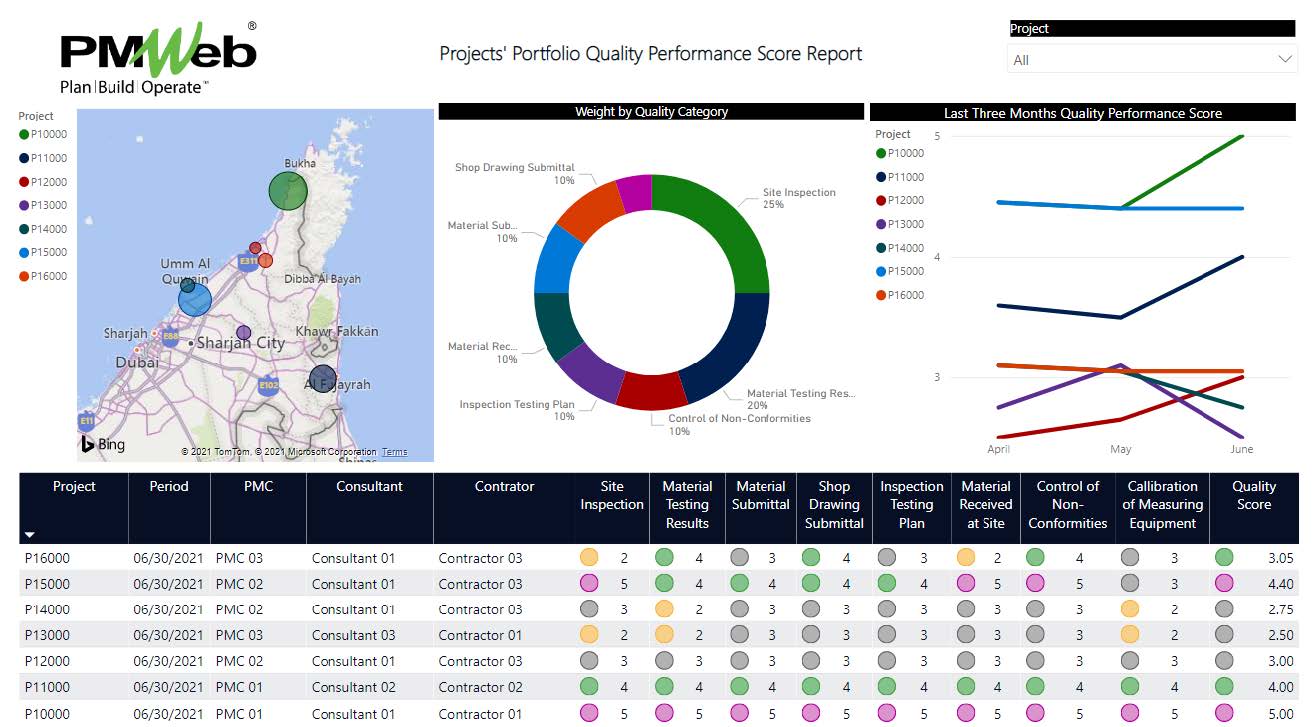
To start with, the project’s QA/QC organization chart will be created in the PMWeb organization chart module to reflect the requirements presented in the project’s execution plan (PEP) in general and the project quality management plan (PQMP) in particular. The organization of the project staff, including QA/QC staff, Construction Quality Manager (CQM) will provide QC oversight and guidance throughout the duration of the project. The organization chart will be populated from the list of project resources.
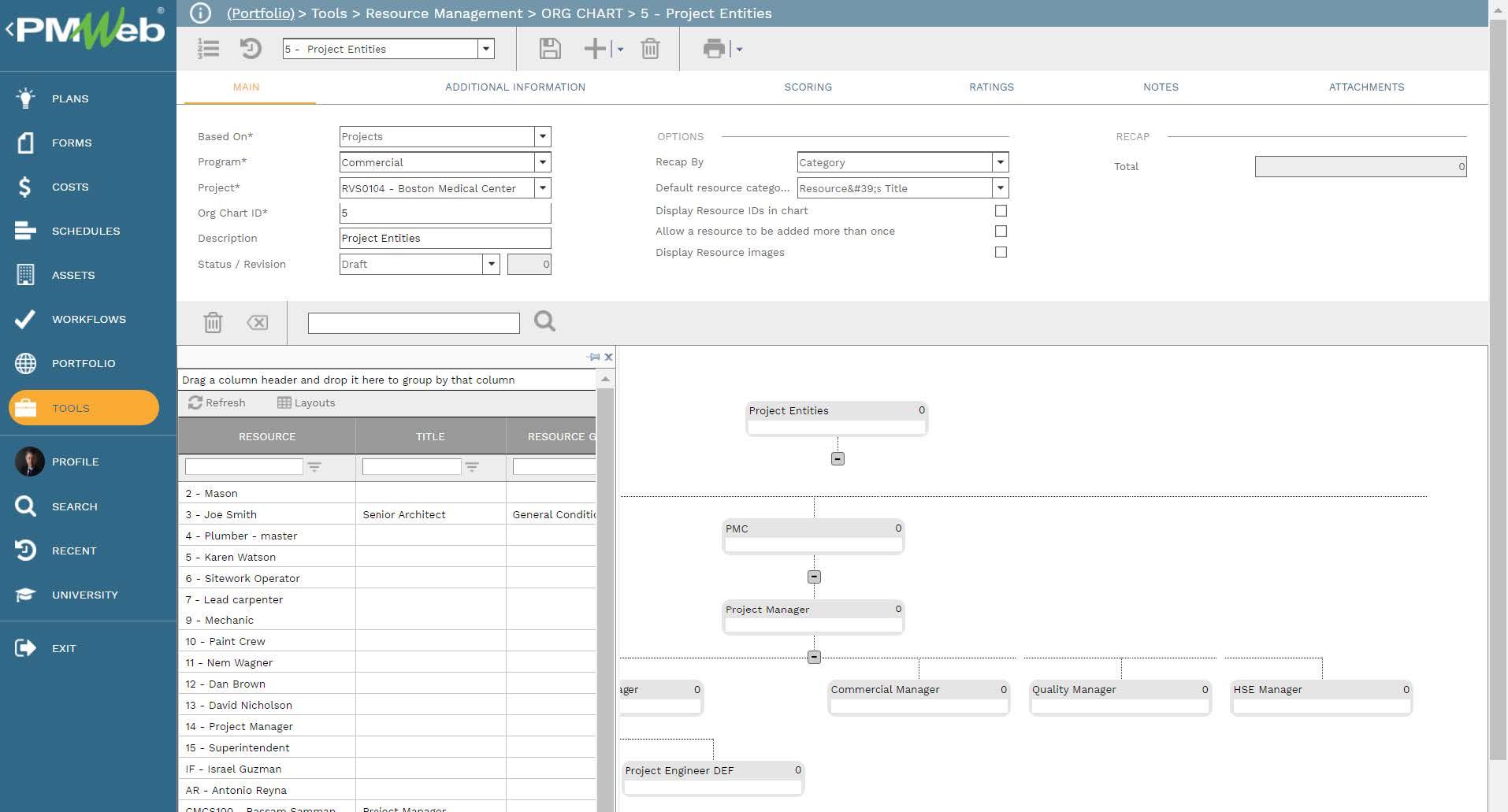
The PQMP should include a clear job description detailing roles, responsibilities, authorities, and performance criteria assigned to each QA/QC team member for which PMWeb custom form builder will be used to create a form to capture those details. For example, the Construction Quality Manager (CQM) will be responsible for the overall implementation of the PQMP, Review, and approval of daily reports, Ensure proper scheduling of preparatory and initial phase inspections, Attending preparatory and initial phase inspections, Prevent, stop, or correct QC deficiencies, defective work, or noncompliance, Exercise “stop work” authority when required to prevent performance inconsistent with contract documents, Investigate research, define, and isolate quality problems and participate in their resolution, Initiate and maintain QC records, review procedures, and monitor documentation for completeness, accuracy, and compliance with contract requirements, Monitor and update the submittal register and review submittals, Ensure that as‐built drawings are being accurately maintained and Staffing, approval, and assignment of additional discipline-specific inspectors as needed to ensure effective implementation of this PQMP.
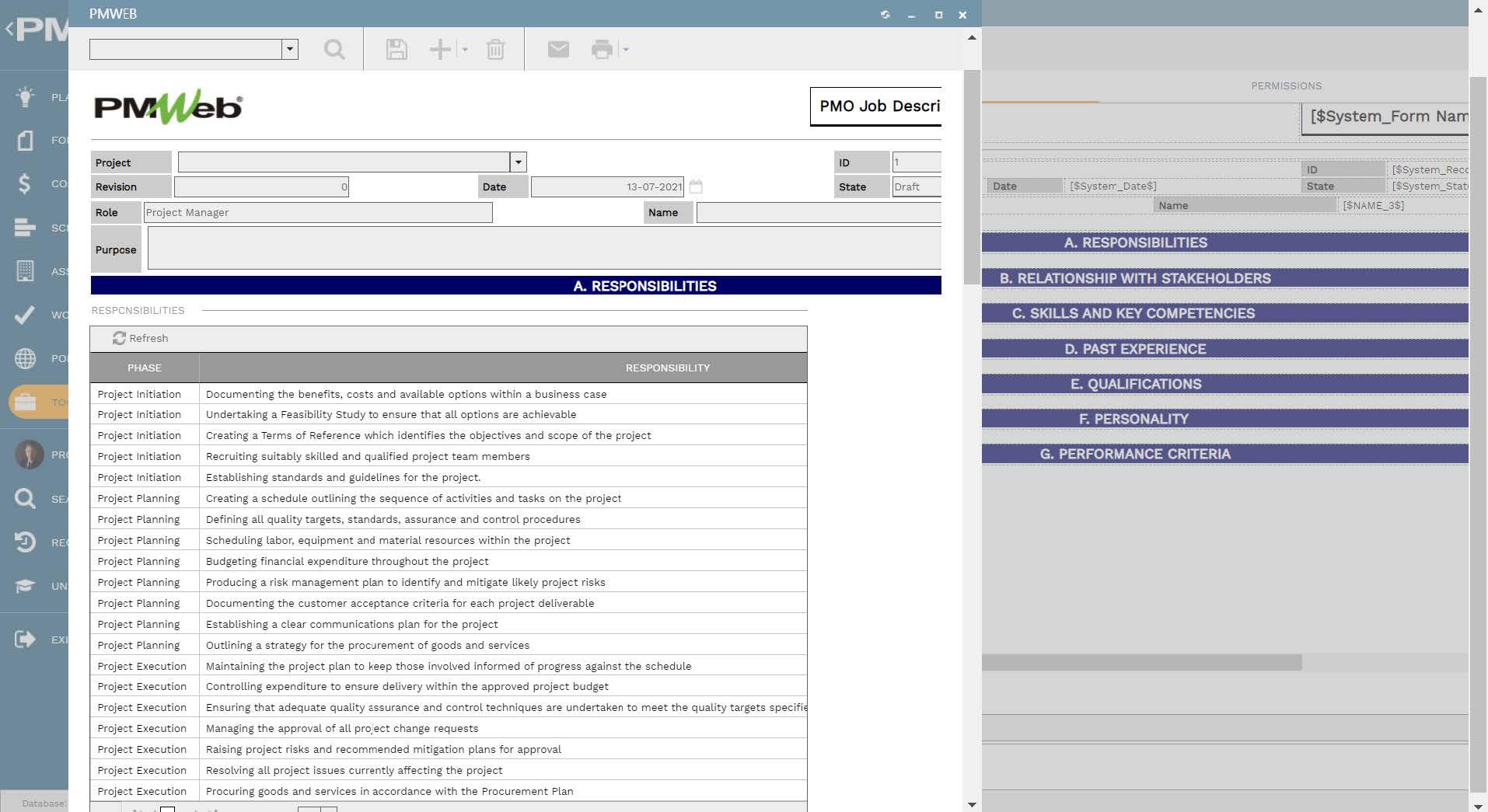
One of the basic requirements of every PQMP is that it should have a detailed list of all organizations and individuals who have a role in the project to achieve the project’s quality assurance and quality control requirements. The list should include the contact details for each individual which are captured in PMWeb companies’ directory which represents a centralized companies directory managed by the entity.
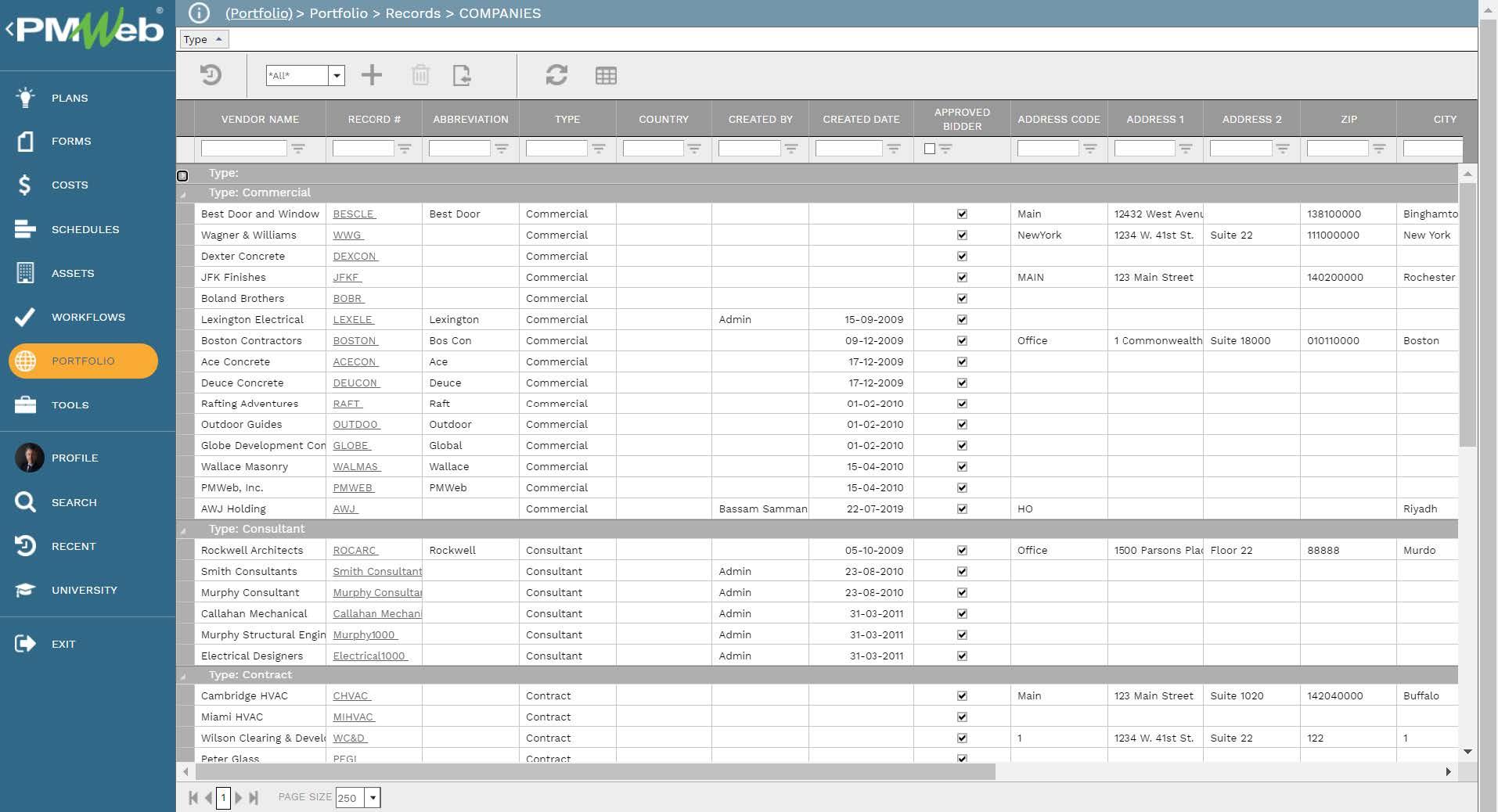
Similar to all other project management subsets, there will be meetings to present and discuss the performance of the quality management activities and issues that need to be resolved. Those meetings are considered as one of the project’s formal communications for which they need to be documented and formally shared with the meeting attendees to review and approve. The Weekly Quality Control (QC) meeting is an example of quality management required meetings that are a must on every construction project. PMWeb meeting minutes module will be used to capture the details of all meetings held during the project life cycle stages regardless of the meeting purpose.
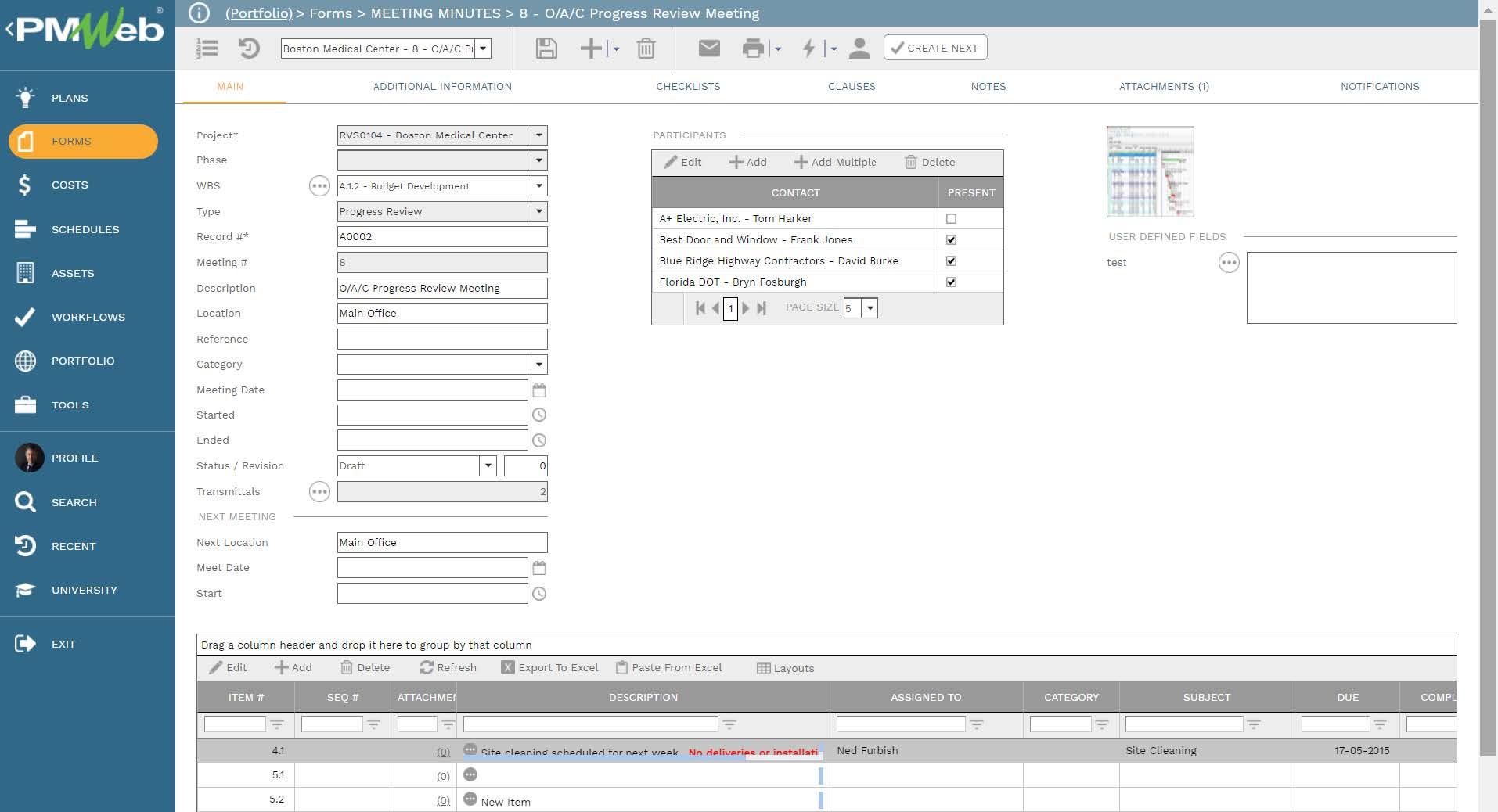
During those weekly meetings, the business items that are usually common to the meeting agenda include rework items (Identified since the last meeting and Completed since the last meeting), submittal status (Submittals reviewed since the last meeting and Submittals expected within the next 2‐week window), identify any testing required in support of or confirming remedial activities, review status of any offsite quality-related activities, identify any special documentation requirements for either production or QC, address and resolve any production or QC problems, identify any production or QC procedures that may be less effective than anticipated and may require revising the project delivery or contingency plan and annotate any recommendations and identify any activities or items that may require revising the PQMP and annotate any recommendations.
In addition to those formal meetings, the PMWeb activity boards module provides an agile solution for ad-hoc or informal meetings that also need to be documented and accessed by those who have a role or responsibility for the discussed tasks and actions. Any authorized project team member can create an activity board for the required purpose. All those activity boards can be accessed from anywhere and any time.
The activity board can include groups for items to be carried out, items assigned to individuals but not yet carried out items that are in progress, and closed items. Each item or task will be assigned to the responsible individual with the due date. Those tasks will be updated by those individuals who were invited to be part of the activity board by adding comments to each task. For tasks that need to be detailed into sub-tasks, this is also possible. Each task can be assigned colored flags to identify its status, type, priority, or requirement. In addition, all supportive documents such as pictures, drawings, certificates, test results, and others can be attached to the task.
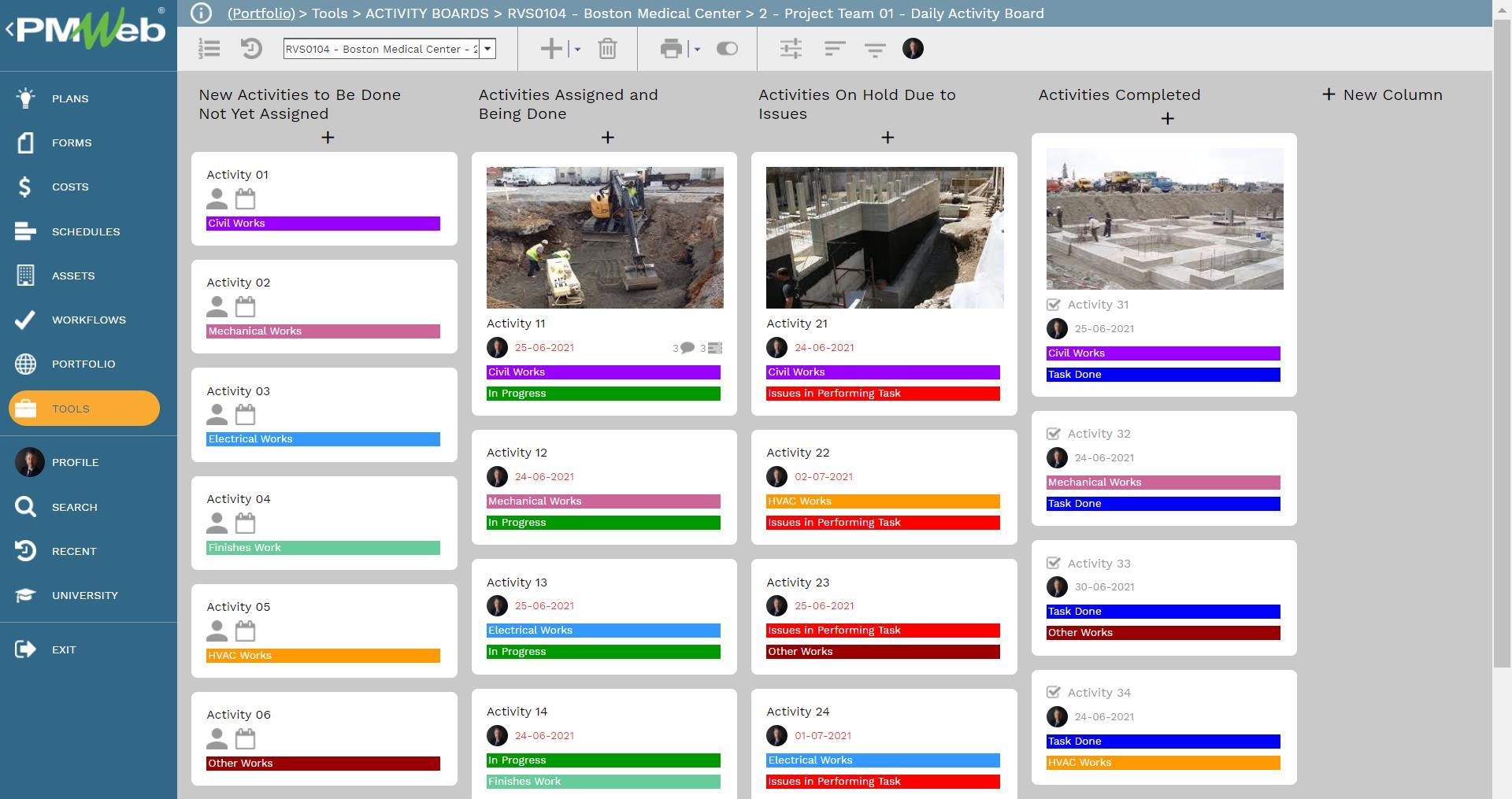
Submittals is one of the must-have business processes for any PQMP. Contractors are required to prepare, review, approve and submit shop drawings, as-built drawings, material samples, test certificates, subcontractors’ qualifications among others to the Consultant for review, approval, or other appropriate action. Submittals demonstrate the contractor’s understanding of the contract documents and how the contractor intends to execute the project requirements by Identifying products selected from acceptable products in specifications, Detailing how items are constructed and interface with adjacent construction, Identifying optional characteristics, Scheduling types of products by location, Describing physical and performance criteria and Certifying that products meet or exceed specified requirements.PMWeb submittal module allows capturing the details of all needed submittals including the relevant specification section, title, supplier, subcontractor WBS level, project schedule activity ID, lead time to procure among others. In addition, PMWeb allows creating an unlimited number of attributes with a list of values that can be used to better describe the submittal and use to report and analyze the performance of the submittal process.
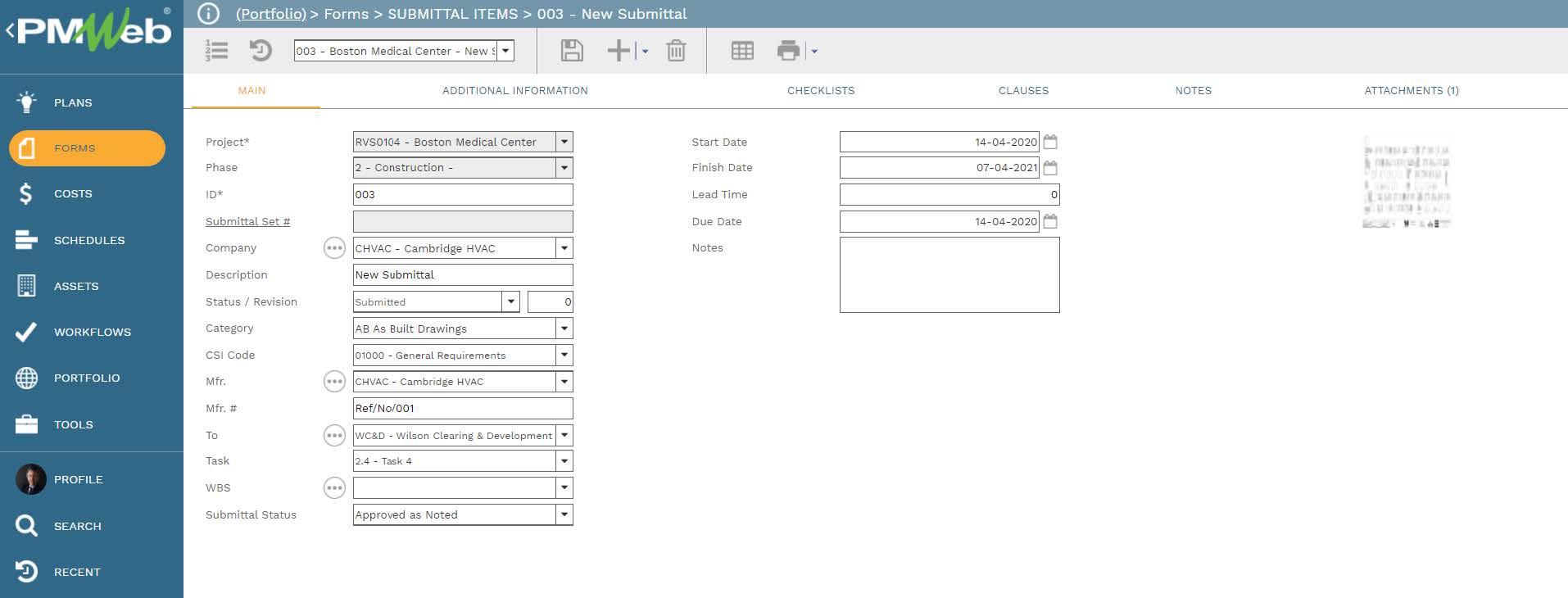
Work Inspection Requests (WIR) is one of the key requirements on a capital construction project. Usually, the project specifications detail the inspection tests needed for each item that will become a permanent asset of the completed project. Therefore, it is highly recommended to have separate detailed inspection checklists for each specification section. This will help not only in building consensus among all parties involved in the inspection process but helps in capturing and documenting past experiences and lessons learned from carrying out those inspections. PMWeb custom form builder will be used to create the Work Inspection Request (WIR) that will be specific for each specification section.

Non-Conformance Reports (NCR) is a construction-related document that keeps track of deviation and work that fails to meet standards and specifications. The most common situations that will require the issuance of an NCR include Work that was not built as indicated in the approved Issued for Construction Drawings, Work that fails to meet specified tolerances as established in the project specifications, Work that is being performed using non-approved methods or standards When the testing and inspection plan is not followed as agreed When testing results demonstrate that the product does not meet established and approved standards When a material is used and has not been approved as a substitute (equal or similar) When the design is not accurate and does not represent actual field conditions and When the approved procedure was not followed, and quality defects have been identified by the project team. PMWeb custom form builder will be used to design the NCR in the desired form and format to capture the needed information.
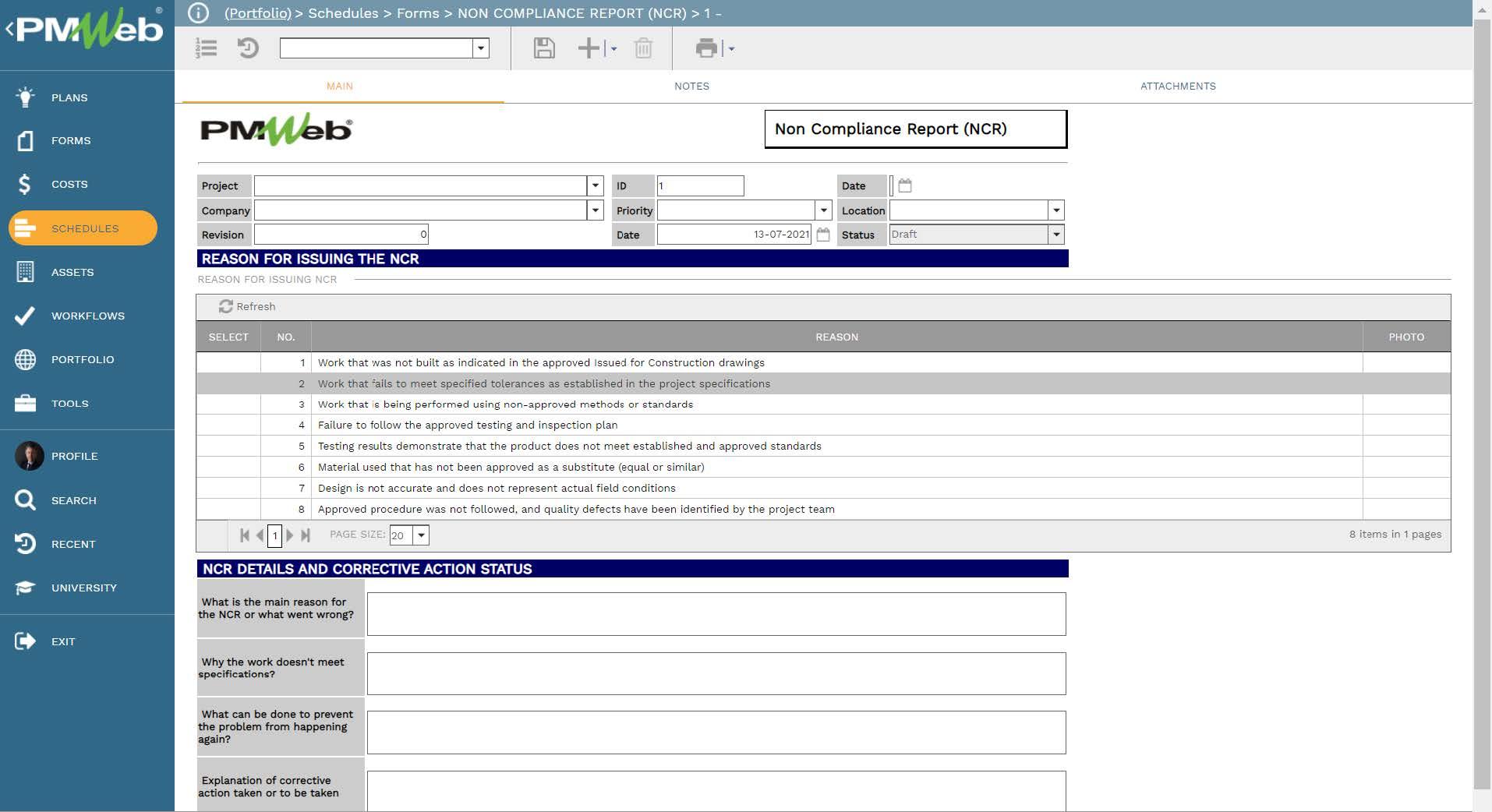
Near completion of all the project’s scope of work or any increment thereof, the CQM will conduct an inspection of the work and develop a “punch list” of items that do not conform to the approved figures and specifications. This “punch list” will include the estimated date by which the deficiencies will be corrected. In addition, the CQM can assess the number of funds to be withheld from the Contractor’s progress invoice until those deficiencies are corrected and accepted. The CQM will make a second inspection to ascertain all deficiencies have been corrected. PMWeb punch list module will be used to fulfill this requirement.
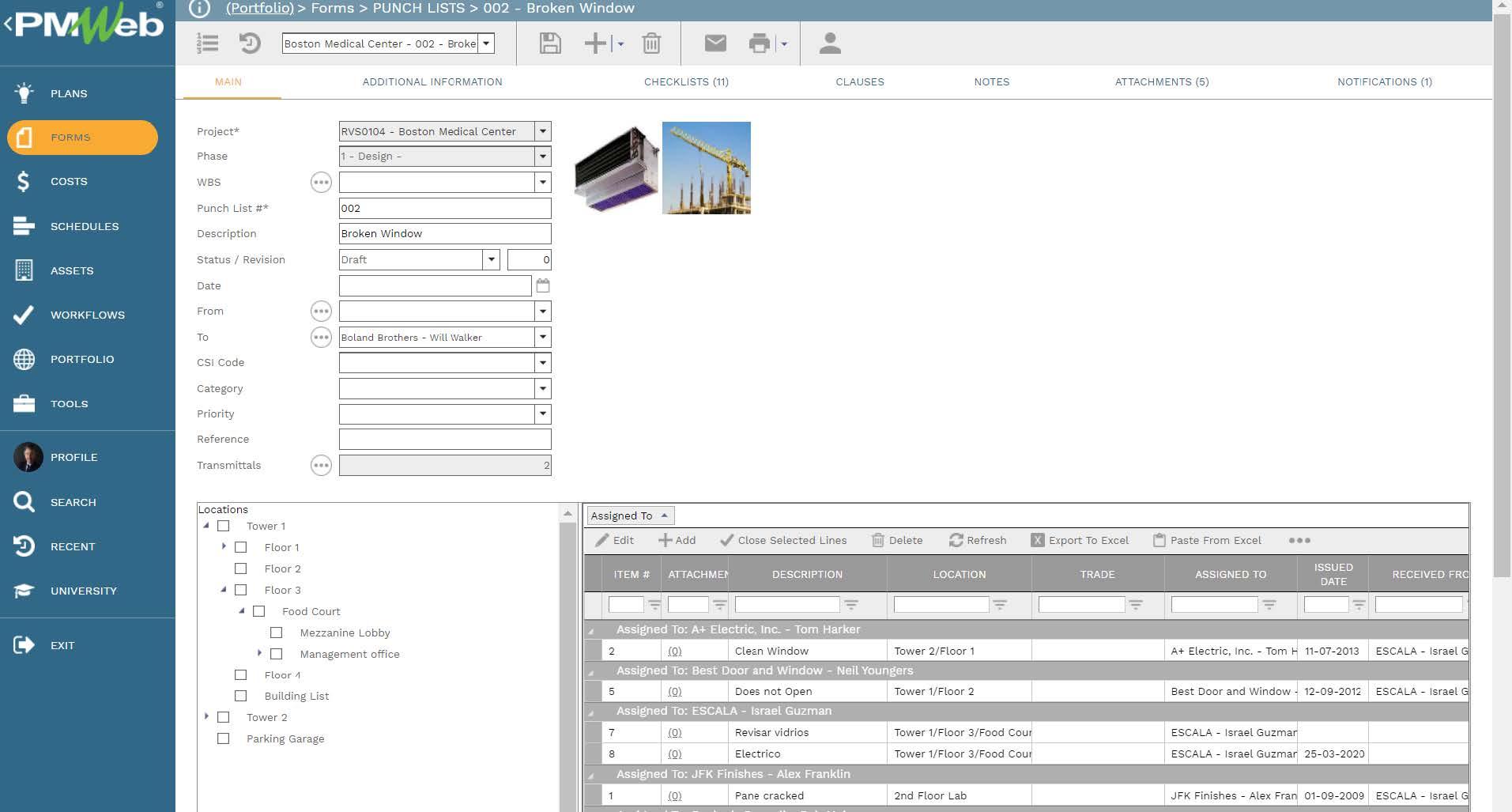
Documents generated by the QA/QC processes as well as other related project management processes must be maintained in an orderly and structured fashion to match the project’s physical filing system. PMWeb document management repository will be used to store all documents that were attached to the different QA/QC processes. Those would include Photographs and videos, Specifications, Contracts, Shop-Drawings, and As-Built Drawings, Test Results and Certificates, Warranties and Guarantees, Operations and Maintenance Manuals, among others.
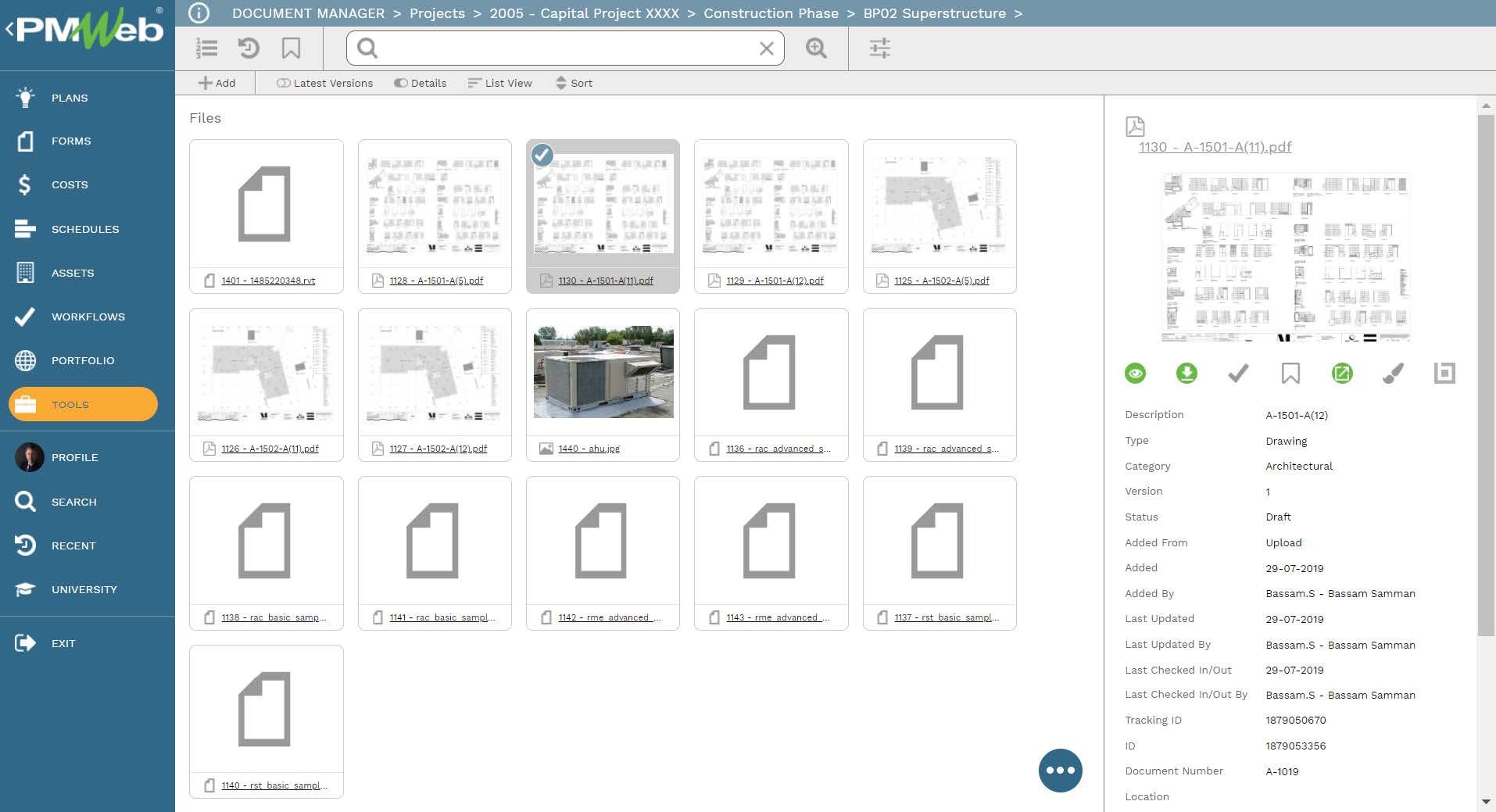
All of those documents will be available to be linked to one or many PMWeb QA/QC records and other PMWeb records like change orders, Request for Information, Transmittal among many others. Comments can be added to those linked documents to provide the reader with a better understanding of the relevance of those attached documents. In addition to the attached document, PMWeb allows linking records from other quality management business processes to a record.
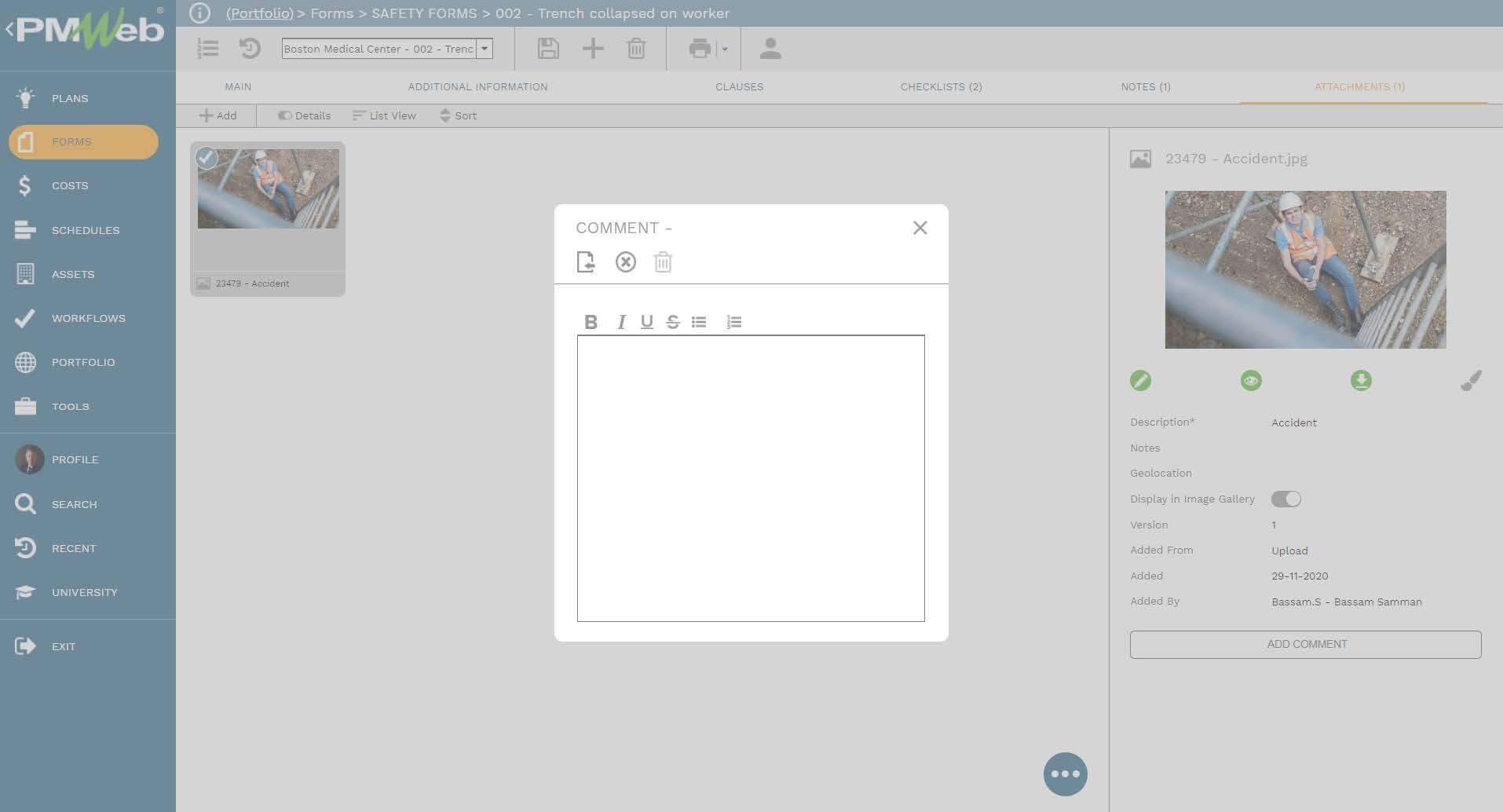
The Project Quality Management Plan (PQMP) should also include a responsibility assignment matrix (RAM) that details the role of each project entity and a team member from those entities in implementing the business processes included in the PQMP. For each quality management business process, the RAM identifies the team member responsible for their performance, review, comments, and who to be informed. The more detailed the RAM is, the fewer conflicts and arguments will occur during the project delivery life cycle stages.
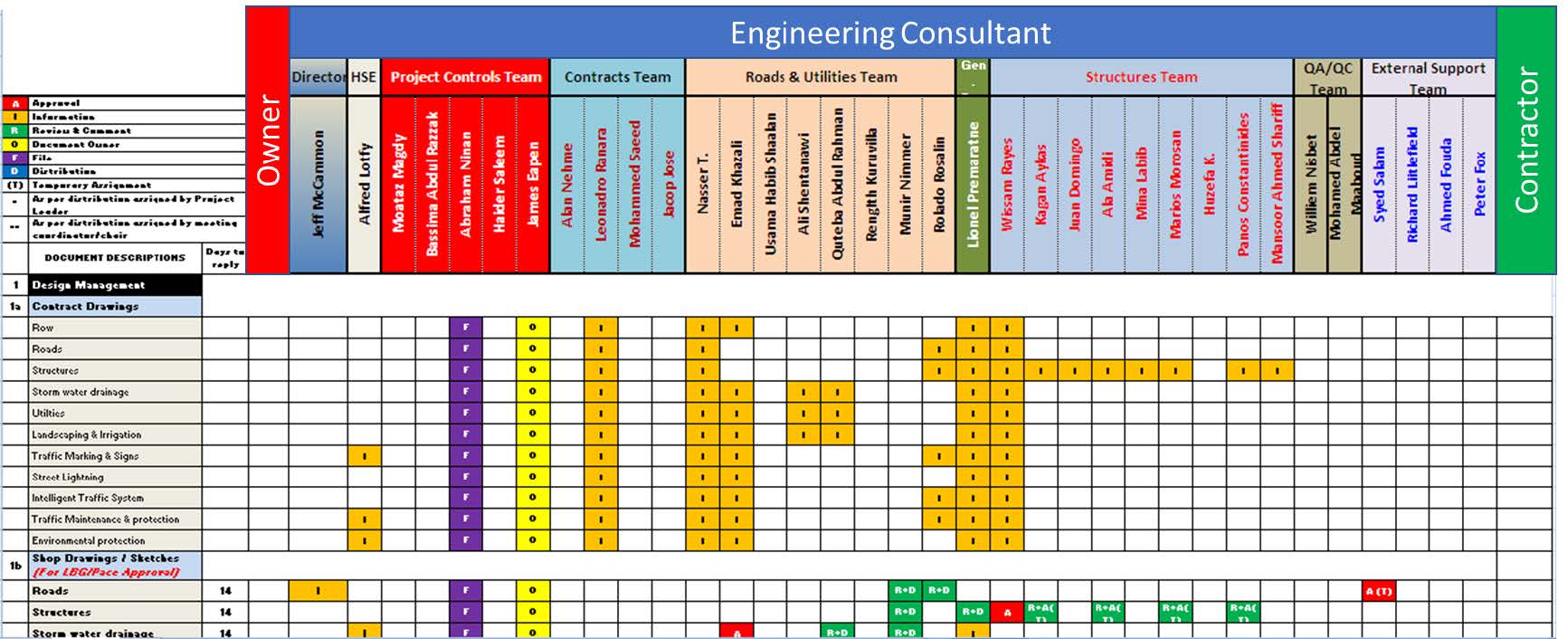
Using the PMWeb workflow module, the RACI values for each process will be translated into a workflow that details the steps for the project team member responsible for initiating the process, the project team member accountable for reviewing and approving the process, the project team members who might need to be consulted by the team member accountable for reviewing and approving the process, and the project team members who need to be informed on the process status and details. When the business process is performed, the workflow will capture the details of the submit, review, and approve tasks associated with each transaction. The workflow will also capture details of all comments made as well as the input of individuals who were invited to give their input on the transaction.
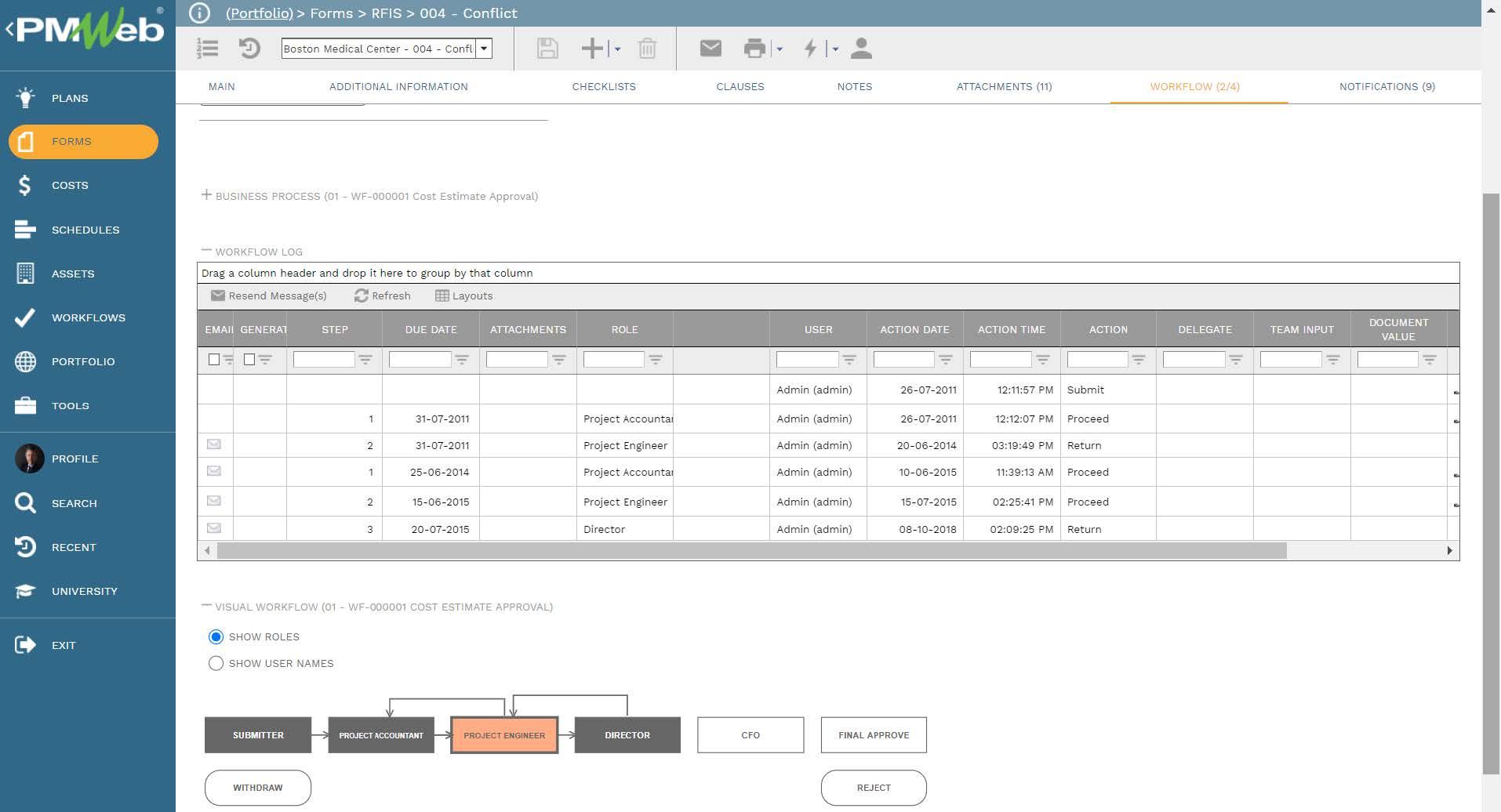
The data captured in the different QA/QC processes will become the trustworthy source of information to provide a real-time single version of the truth on the project’s performance from the quality perspective. Tabular and visual logs for the different processes including submittals requests for inspections, non-conformance reports, punch lists among others can be produced in the desired form and format. For projects where Building Information Modelling (BIM is in use, the captured QA/QC data can be associated with the BIM model objective. Those reports provide the project’s quality management team with the insight to make better and faster informed QA/QC-related decisions.
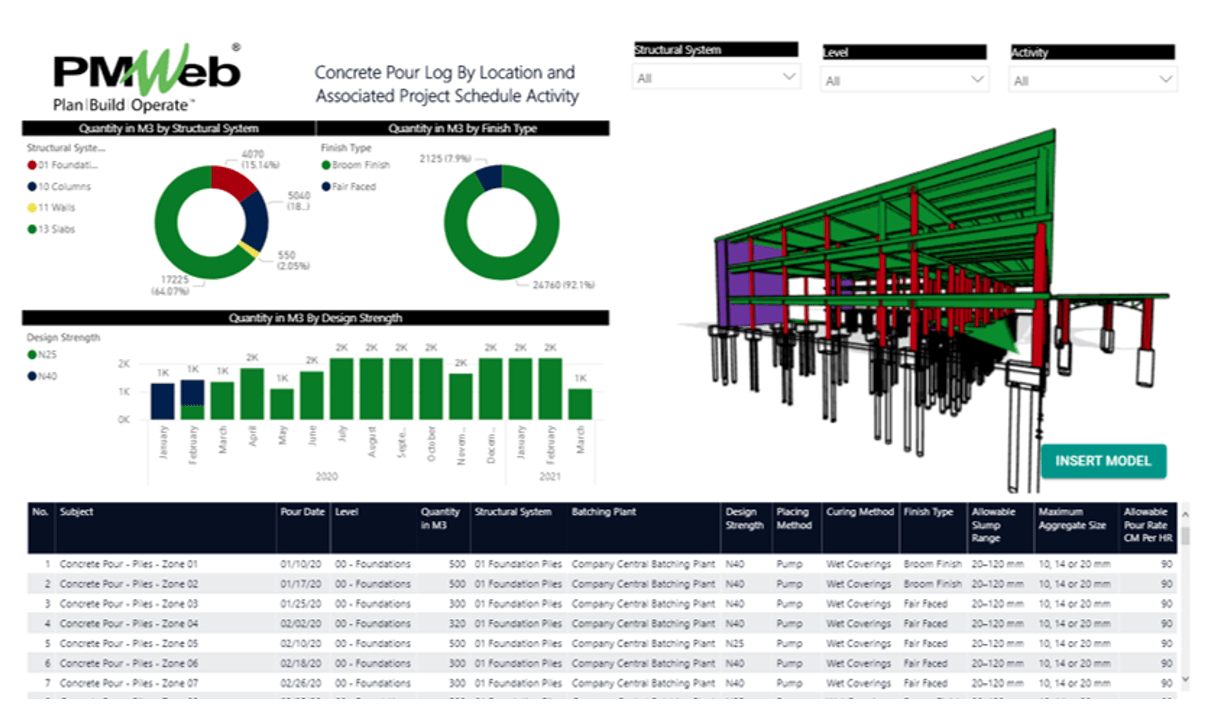
Of course, the Project Quality Management Plan (PQMP) can include many other business processes that are needed to ensure the quality of the work in place. PMWeb custom form builder provides the quality management team with unlimited options to convert all form templates and checklists created in MS Excel, MS Word, or any other platform to a governed business process managed in PMWeb. Not only this will enforce the best practices of transparency and accountability, but also ensure that the captured knowledge and lessons learned from performing quality management business processes are not wasted.
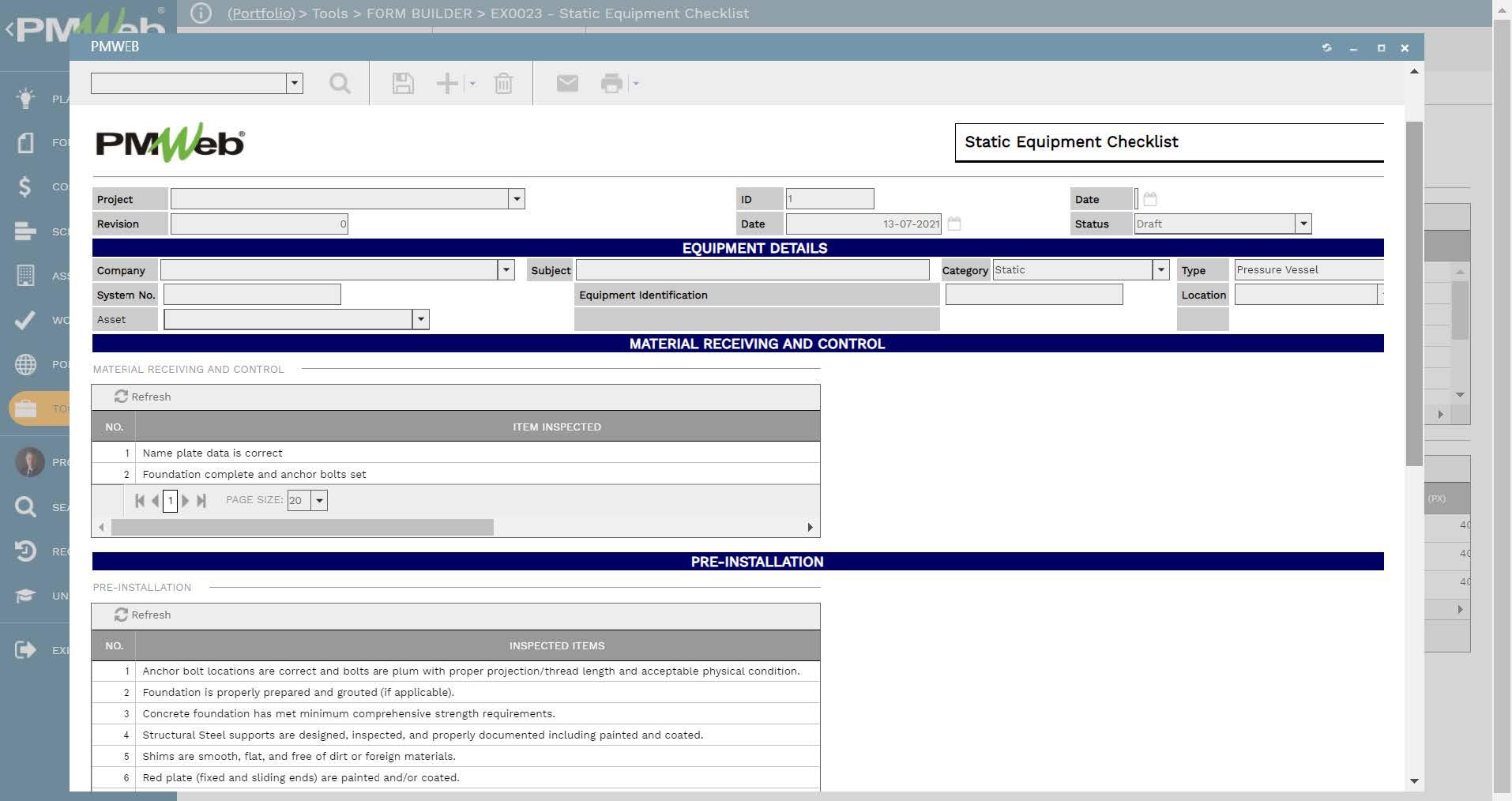
The data captured in the different quality management business processes will become the trustworthy data sources feeding the overall project’s monthly progress report. Along with the data from the schedule, cost, procurement, contract, risk, health and safety, sustainable development, and document management, the quality management data will provide stakeholders with a single version of the truth on how their capital construction project is performing.
